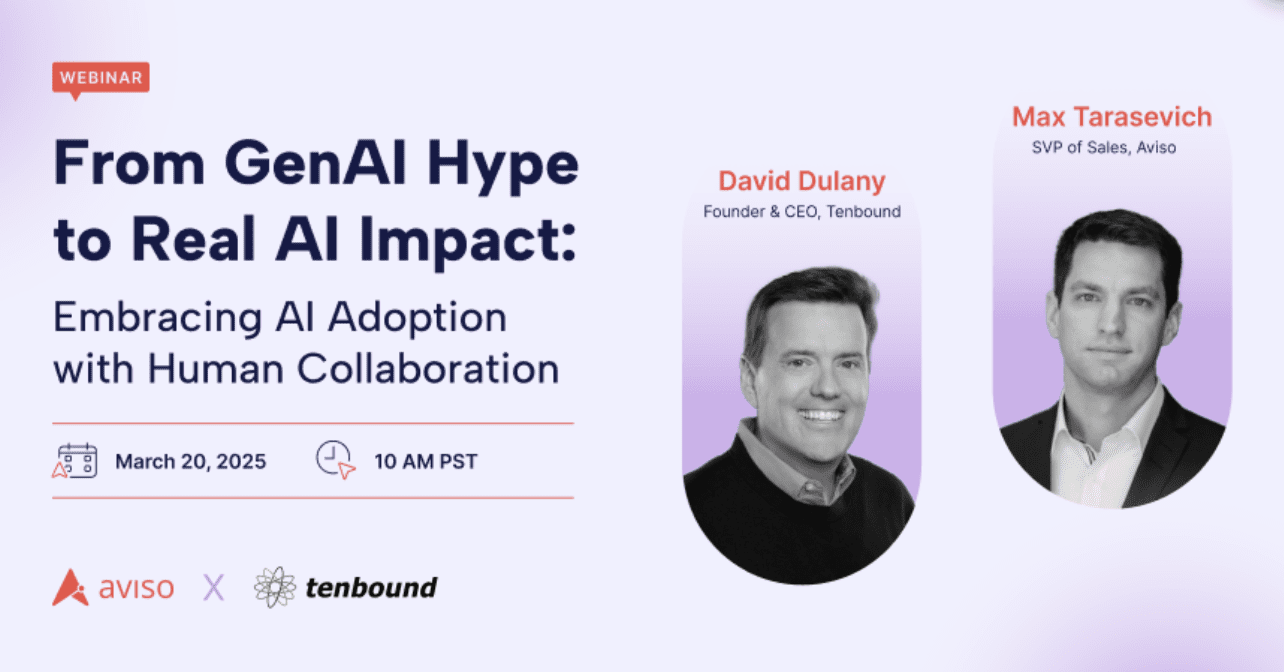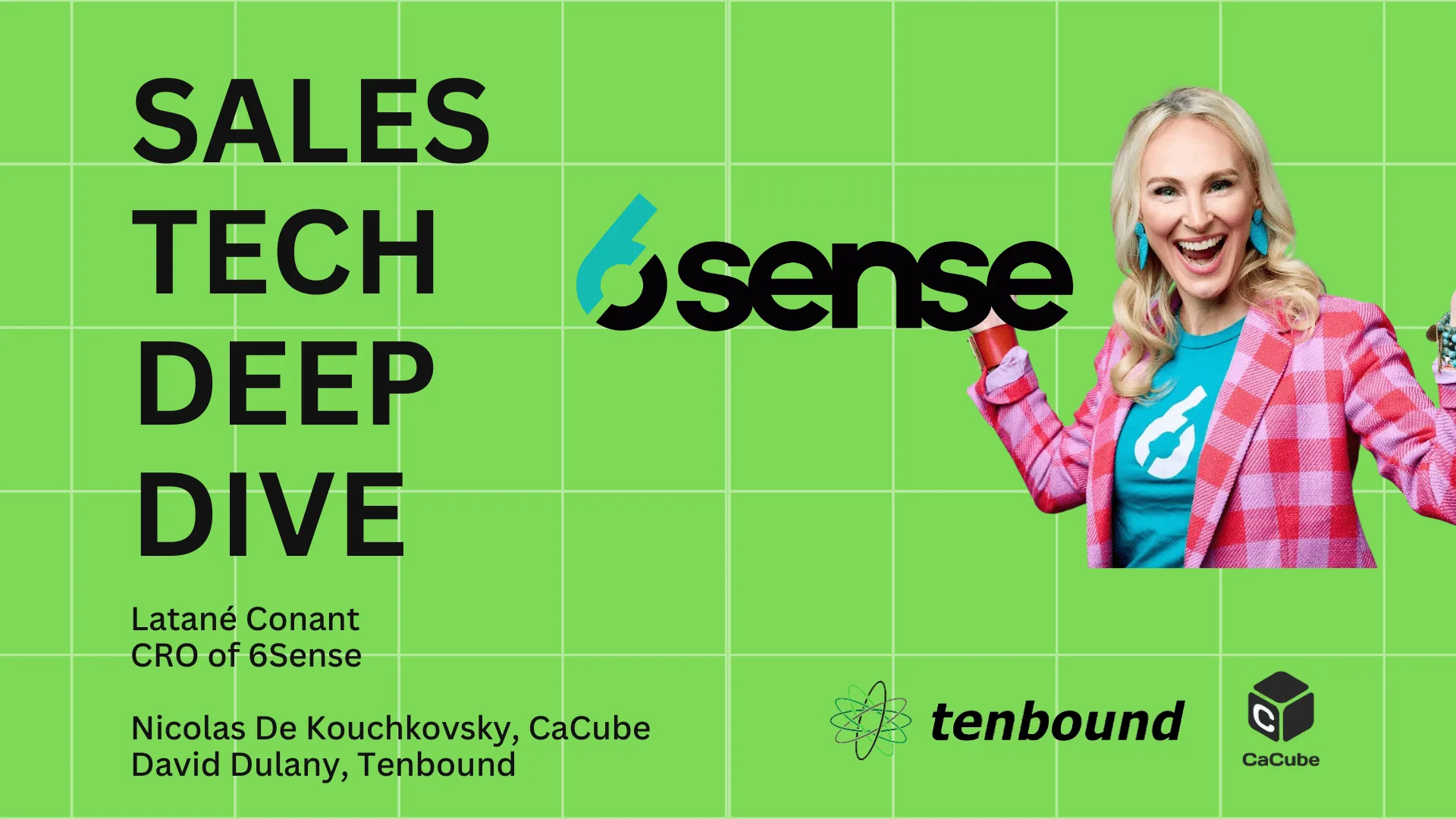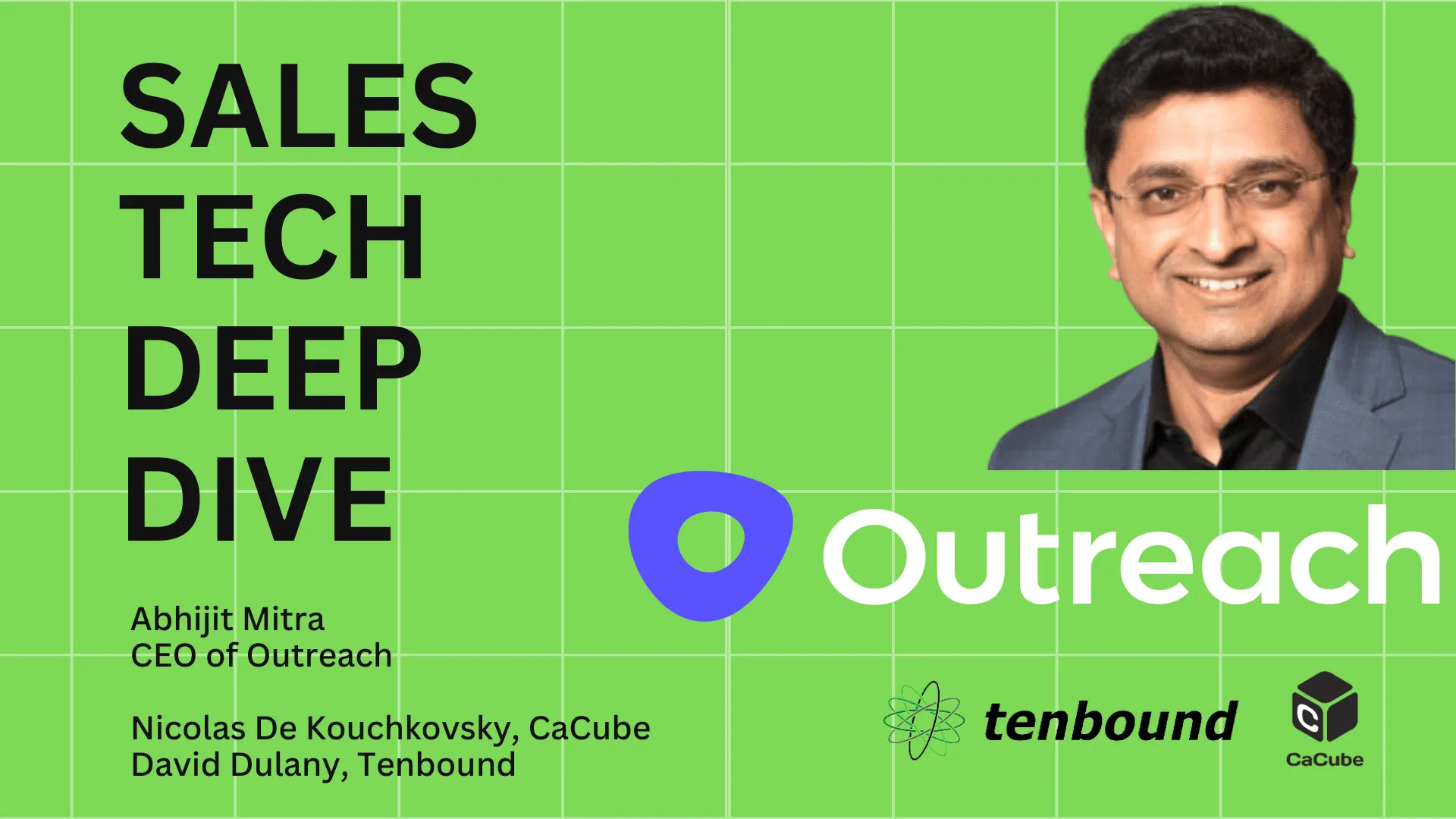
Artificial Intelligence, and more specifically Generative AI (GenAI), has become the talk of the town across every function in the go-to-market (GTM) org. But is the hype justified? Or are we chasing another shiny object destined to disappoint? In a recent webinar, David Dulany, Founder of Tenbound, sat down with Max Tarasevich, SVP of Sales at Aviso, to separate fact from fiction and uncover how sales teams are actually using GenAI to drive results.
Spoiler alert: it’s not just about writing emails.
From Hype to Real-World Impact
While most of the conversation around GenAI has centered on outbound messaging and content creation, the real power lies deeper in the sales process. David Dulany emphasized the importance of identifying your “jobs to be done” — the daily, often repetitive tasks that bog down SDRs, AEs, and Sales Leaders. When those tasks are mapped out, it becomes clear where GenAI can accelerate workflows and unlock performance gains.
Think less manual research, more actionable insights.
Five years ago, SDRs were buried in spreadsheets and databases, hunting for contact info. Today, AI tools drastically reduce that time. Similarly, reps no longer need to read through 10-Ks and analyst calls before big meetings—AI can summarize the data and even suggest talk tracks based on prospect intent and company news.
Myth Busting GenAI in Sales
Tarasevich shared insights from studies by McKinsey and Harvard Business Review, which identified five myths companies often fall into when adopting GenAI. Chief among them: the idea that GenAI is only useful for top-of-funnel prospecting.
In reality, GenAI’s biggest productivity wins come from deeper in the funnel — generating account plans, summarizing call transcripts, automating CRM entries, and prepping managers with smart coaching data. These tasks are where sales teams spend the most time, and where automation makes the biggest difference.
Why Data Quality Still Rules
One critical takeaway from the conversation? “Garbage in, garbage out.” AI is an accelerator — but without quality data, it just speeds up bad decisions. That’s why companies need strong data governance and, often, a dedicated “go-to-market engineer” to ensure that AI systems are working from a clean, structured foundation.
Many AI-first companies are flipping the traditional sales hiring model. Instead of hiring armies of SDRs, they’re investing in automation infrastructure and augmenting smaller teams with AI to create higher leverage.
Speed, Security, and Real ROI
Contrary to common belief, GenAI adoption doesn’t have to take months. Tarasevich shared examples of companies seeing a 20%+ improvement in sales productivity within six weeks of implementation.
Security and data privacy are also top concerns. Leading platforms are now embedding permission controls directly into their AI models, ensuring sensitive customer data isn’t exposed across teams or systems.
Final Thoughts: Map, Measure, and Move
Dulany’s final piece of advice? Go back to your desk, list out your daily sales tasks, and ask: “Where could AI save me time or improve outcomes?” Then, pick one area to test. AI adoption in sales isn’t an all-or-nothing proposition—it’s about making smart, measurable moves.
Want help implementing GenAI in your sales org? Start by mapping your “jobs to be done”—and the AI will take care of the rest. tenbound.com/contact
Subscribe to the Tenbound Blog for the latest research releases, Sales Development thought leadership and best practices.
Related Articles
-
Published On: April 9, 2025
In this episode of Sales Tech Deep Dive, David Dulany and Nicolas de Kouchkovsky sit down with Latané Conant, CRO [...]
-
Published On: April 9, 2025
Artificial Intelligence, and more specifically Generative AI (GenAI), has become the talk of the town across every function in the [...]
-
Published On: April 9, 2025
In this episode of Sales Tech Deep Dive, we sit down with Abhijit Mitra, CEO of Outreach, to explore the [...]
The Latest Tenbound Articles
The landscape of sales automation is evolving rapidly, with AI-driven innovations reshaping how businesses engage with prospects, optimize outreach, and close deals. Here are the top trends in sales automation [...]
Introducing the Sales Tech Spotlight Launch Package from Tenbound, your strategic launch pad to elevate your brand within the Sales [...]
by David Frankle of Nayak.ai , Tenbound Expert Network Introduction This collection of prompts aims to showcase the power of [...]
Observations on Version 9 – Download here Lasted updated The Sales Development tech space is growing leaps and bounds. The challenge [...]
DocketAI has a bold insight: only 7% of true sales knowledge is documented and shared effectively. The remaining 93%—tribal [...]
[...]
Sales Efficiency is a critical Key Performance Indicator (KPI) in the Software as a Service (SaaS) industry. This metric provides [...]
For over two decades, the Software-as-a-Service (SaaS) model has dominated the tech industry, including Sales and Marketing Technology. Businesses of [...]
Apollo.io has unveiled Apollo Labs, a cutting-edge sales prospecting solution that integrates AI-powered SDRs, outsourced sales development, and Clay-based [...]
On this week’s Leaders in Sales Development blog series we have Jimmy Chen, Director of WW Sales Development at [...]
The Voice of the Customer (VoC) is a critical concept for businesses seeking to understand and meet the expectations of [...]
The Tenbound Expert Program is an exclusive, network for top GTM Executives in B2B SaaS. Elevate your professional skills, expand [...]
The landscape of sales automation is evolving rapidly, with AI-driven innovations reshaping how businesses engage with prospects, optimize outreach, and [...]
Top Trends in RevOps Today 1. Data-Driven Decision-Making Companies are investing heavily in tools and practices to unify data from [...]
In today’s competitive business landscape, Sales Technology software has become a must-have for organizations aiming to streamline operations, enhance [...]
The ideal number of cold calls an SDR (Sales Development Representative) should make daily depends on various factors, such as [...]
DocketAI has a bold insight: only 7% of true sales knowledge is documented and shared effectively. The remaining 93%—tribal knowledge and tacit expertise—lives in Slack threads, Zoom calls, and the [...]
DocketAI has a bold insight: only 7% of true sales knowledge is documented and shared effectively. The remaining 93%—tribal knowledge and tacit expertise—lives in Slack threads, Zoom calls, and the [...]
DocketAI has a bold insight: only 7% of true sales knowledge is documented and shared effectively. The remaining 93%—tribal knowledge and tacit expertise—lives in Slack threads, Zoom calls, and the [...]
DocketAI has a bold insight: only 7% of true sales knowledge is documented and shared effectively. The remaining 93%—tribal knowledge and tacit expertise—lives in Slack threads, Zoom calls, and the [...]
DocketAI has a bold insight: only 7% of true sales knowledge is documented and shared effectively. The remaining 93%—tribal knowledge and tacit expertise—lives in Slack threads, Zoom calls, and the [...]
DocketAI has a bold insight: only 7% of true sales knowledge is documented and shared effectively. The remaining 93%—tribal knowledge and tacit expertise—lives in Slack threads, Zoom calls, and the [...]
DocketAI has a bold insight: only 7% of true sales knowledge is documented and shared effectively. The remaining 93%—tribal knowledge and tacit expertise—lives in Slack threads, Zoom calls, and the [...]
DocketAI has a bold insight: only 7% of true sales knowledge is documented and shared effectively. The remaining 93%—tribal knowledge and tacit expertise—lives in Slack threads, Zoom calls, and the [...]
DocketAI has a bold insight: only 7% of true sales knowledge is documented and shared effectively. The remaining 93%—tribal knowledge and tacit expertise—lives in Slack threads, Zoom calls, and the [...]
DocketAI has a bold insight: only 7% of true sales knowledge is documented and shared effectively. The remaining 93%—tribal knowledge and tacit expertise—lives in Slack threads, Zoom calls, and the [...]
DocketAI has a bold insight: only 7% of true sales knowledge is documented and shared effectively. The remaining 93%—tribal knowledge and tacit expertise—lives in Slack threads, Zoom calls, and the [...]
DocketAI has a bold insight: only 7% of true sales knowledge is documented and shared effectively. The remaining 93%—tribal knowledge and tacit expertise—lives in Slack threads, Zoom calls, and the [...]
DocketAI has a bold insight: only 7% of true sales knowledge is documented and shared effectively. The remaining 93%—tribal knowledge and tacit expertise—lives in Slack threads, Zoom calls, and the [...]
DocketAI has a bold insight: only 7% of true sales knowledge is documented and shared effectively. The remaining 93%—tribal knowledge and tacit expertise—lives in Slack threads, Zoom calls, and the [...]
DocketAI has a bold insight: only 7% of true sales knowledge is documented and shared effectively. The remaining 93%—tribal knowledge and tacit expertise—lives in Slack threads, Zoom calls, and the [...]

















